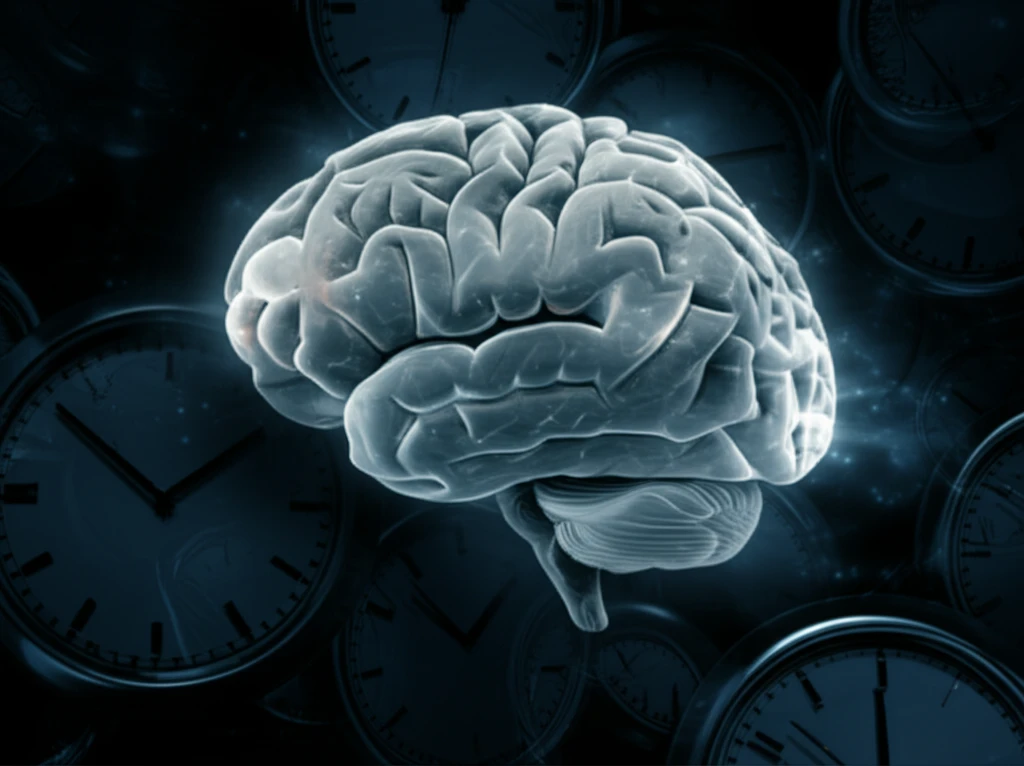
Is Your Brain on High Alert? How Insomnia Changes Brain Structure
"New research reveals how primary insomnia leads to gray matter hypertrophy, potentially explaining the persistent hyper-arousal associated with the sleep disorder."
For many, insomnia is a frustratingly familiar struggle. The tossing and turning, the racing thoughts, the desperate clock-watching – it’s a nightly battle for millions. But what if insomnia is more than just a sleep disorder? What if it leaves a tangible mark on the very structure of your brain?
While past studies have hinted at brain abnormalities in individuals with primary insomnia (PI), these were often limited by small sample sizes and a focus on specific brain regions. Now, new research employing advanced surface-based morphometry (SBM) techniques offers a more comprehensive picture of how insomnia reshapes the brain.
This article will explore the key findings of this study, diving into how primary insomnia can lead to gray matter hypertrophy – an enlargement of brain tissue – in specific areas associated with crucial functions like emotional regulation, attention, and sensory processing. Understanding these structural changes could unlock new avenues for diagnosing and treating this pervasive sleep disorder.
Insomnia's Impact: Hyper-arousal and Brain Changes

The study, conducted by researchers at Chengdu University of Traditional Chinese Medicine and Southeast University, involved 67 patients with PI and 55 healthy controls. Using magnetic resonance imaging (MRI), the team meticulously examined the cortical morphology – the thickness and volume of the brain’s outer layer – in both groups.
- Left orbital frontal cortex (OFC): Involved in emotional regulation and decision-making.
- Right rostral anterior cingulate cortex (rACC): Plays a role in emotional processing and attention.
- Left middle cingulate cortex (MCC): Contributes to attention control and emotional regulation.
- Bilateral insula: Important for salience and emotional processing.
- Left superior parietal lobule (SPL): Involved in spatial cognition and attention.
- Right fusiform area (FFA): Associated with facial processing and visual recognition.
The Hyper-arousal Model: A New Perspective on Insomnia
These findings align with the hyper-arousal model of insomnia, which posits that individuals with PI experience a heightened state of alertness that interferes with their ability to fall and stay asleep. The observed gray matter hypertrophy in regions associated with attention, emotional regulation, and sensory processing may reflect the brain's attempt to compensate for this chronic state of hyper-arousal.
This study marks a significant step forward in understanding the neuropathology of primary insomnia. By identifying specific structural changes in the brain, researchers are paving the way for more targeted diagnostic and therapeutic interventions.
While further research is needed to fully elucidate the mechanisms underlying these brain changes and their long-term consequences, these findings offer hope for developing more effective treatments to alleviate the burden of insomnia and improve the lives of millions.
